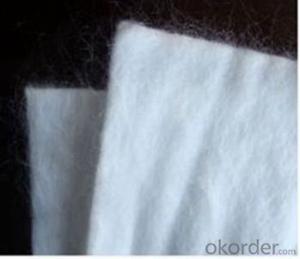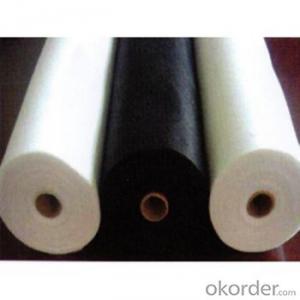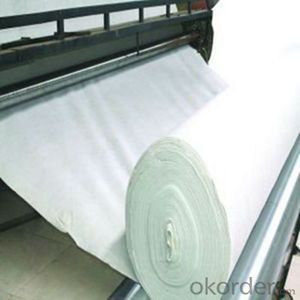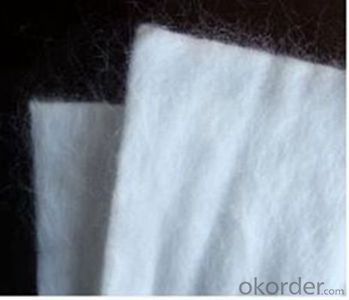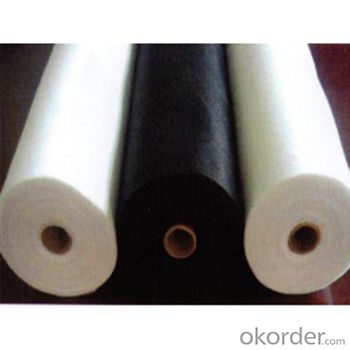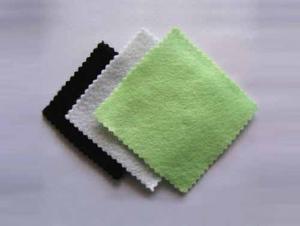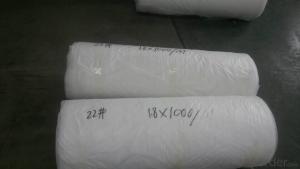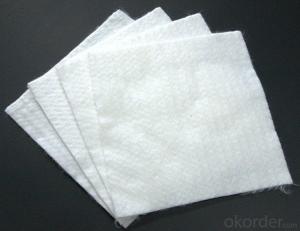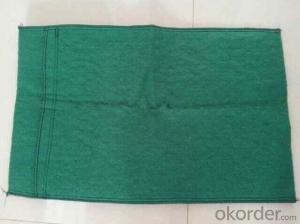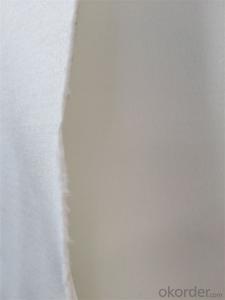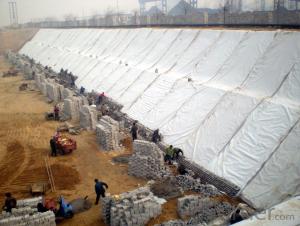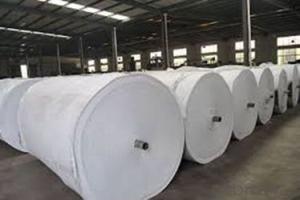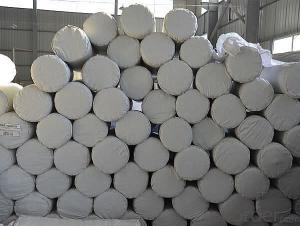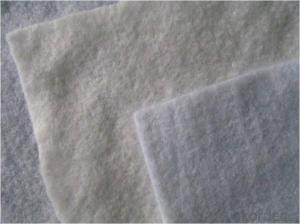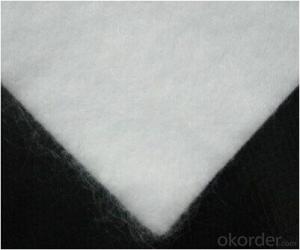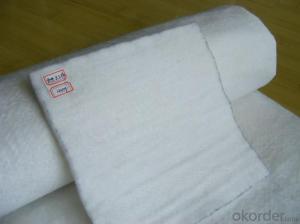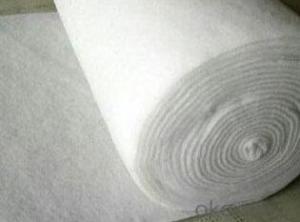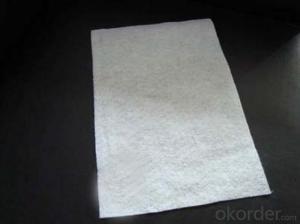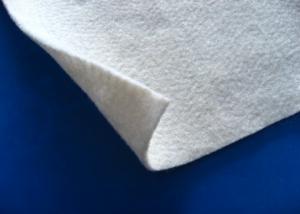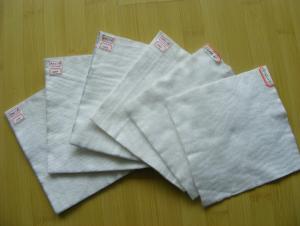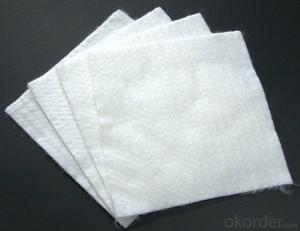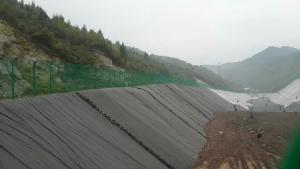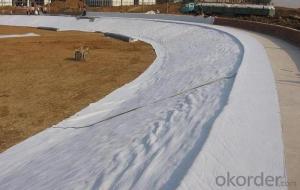Non Woven Geotextile With Light Weight Compounding Silk
- Loading Port:
- China main port
- Payment Terms:
- TT OR LC
- Min Order Qty:
- 10000 m²
- Supply Capability:
- 500000 m²/month
OKorder Service Pledge
OKorder Financial Service
You Might Also Like
Specification
Drainage Non Woven Geotextile With Light Weight Compounding Silk
Quick detail:
Weight: According to customer requirements
Width: ≤6m
Tensile strength: According to customer requirements
Description:
The product is made by compounding split silk woven geotextile of filament woven geotextile, and nonwoven geotextile by acupuncture. Product has the performances of woven geotextile and nonwoven geotextile, and can be widely used in projects, such as railway, highway, stadium, dam waterwork, coastal tidal flat, reclamation and environmental protection, etc.
Functions:
To use of geotextile to increase the tensile strength and non-deformation of soil mass, increase stability of architectural structure, improve quality of soil mass, and effectively disperse, transfer and discompose centralization stress, to avoid soil mass from being destroyed because of exogenic action.
To avoid mixing of gravel of the upper and lower layers, soil mass and concrete.
Mesh shall not be easily blocked: reticular structure formed because of organization of indefinite fiber shall have anergy and mobility.
High water permeability: it can still keep good water permeability under pressure soil water.
Corrosion resistance: with polypropylene or dacron or other chemical fiber as material, acid proof alkali, non corroding, no damage by worms, and anti oxidation.
Easy construction: in light weight, convenient to use and construction.
Applications:
Hydraulic project
Sea embankment, river bank, lake dike
Anti-flood rescue work
Road construction
Soft soil improvement
Slope protetion
Road surface anti-reflection
Drainage
Railway project
Railway slope reinforcement
Tunnel anti-water skirting
Covert ditch for water discharge
Fly ash dam for coal-fired
Power plant Hydropower station
Aviation project
Runway foundation improvement
Structural course for apron
Airport road and drainage system
Detailed Images

Packaging & Shipping
Packing: PLASTIC FILM INSIDE, AND WOVEN BAG OUTSIDE
Shipping: About 15 days after receipt the deposit
pecifications
geotextile fabric
permeability,filtration,easy for construction
ISO and CE certificate
Good quality and competitive price
Our Service
Quality assurance
1.On a regular basis or as per your request,we entrust national testing agencies to conduct quality inspections
2. Strictly in accordance with the ISO9001-2008 international quality system standard,we monitor and manage the whole process throughout production,quality testing,and measurement to ensure product quality
3. For quality-related construction delay or substandard construction(except for damage or losses due to customer’s responsibility or irresistible natural disasters),we have refunding,replacement,and repair services.We will respond to customers’ feedbacks on quality issues within 24 hours.
After-sales service
1.In order to provide customers with comprehensive technical support,we will provide technical and other related information upon request in a timely manner.
2.In required,we will appoint specialized technicians to the construction site to give technical trainings to construction people,and offer technical guidance throughout the whole construction process.
3.For damage due to shipment and delivery,after we receive the complaint,we will check the issure through provided pictures and videos.If our responsibility is confirmed,we wil offer free replacement.
4.When the construction is completed,as your request,our technical staff may participate in the final acceptance.
FAQ:
Q: What kind of payments does jenor support?
A: T/T, L/C, Cash are accepted.
Q: Do you charge for the samples?
A: Accordeing to our company policy, the samples are free, we only charge the freight fee. And we will return the freight fee during the next order.
Q: Can you produce according to customers' design?
A: Sure, we are professional manufacturer, OEM and ODM are both welcome.
Q: Do you have other products?
A: Yes, please check the pictures:
- Q: What are the specifications for geotextiles in subsurface drainage projects?
- The specifications for geotextiles in subsurface drainage projects typically include requirements for the material's strength, permeability, filtration properties, and durability. These specifications ensure that the geotextile can effectively separate soil particles from the drainage media, prevent clogging, and maintain its functionality over time. Additionally, the specifications may also address the geotextile's dimensions, weight, and installation guidelines to ensure proper performance in subsurface drainage applications.
- Q: How do geotextiles improve the performance of retaining walls?
- Geotextiles improve the performance of retaining walls by providing reinforcement and stability to the soil behind the wall. They act as a barrier to prevent soil erosion and help distribute the load evenly, reducing the pressure on the wall. Additionally, geotextiles allow for the drainage of water, preventing buildup behind the wall and minimizing the risk of hydrostatic pressure, which can cause wall failure.
- Q: Can geotextiles be used in pond liner systems?
- Yes, geotextiles can be used in pond liner systems. Geotextiles are often employed as a protective layer or underlayment for pond liners to enhance their performance and prevent punctures or damage. They can help with drainage, filtration, and soil stability, making them a valuable component in pond liner systems.
- Q: Geotextile, geomembrane to go to the laboratory test
- Need, Huazhi geotechnical materials to solve manufacturers
- Q: What are the geotextiles for concrete health
- Do not use non-woven fabrics
- Q: How do geotextiles contribute to soil improvement in soft ground areas?
- Geotextiles contribute to soil improvement in soft ground areas by providing reinforcement and stabilization. They act as a barrier between the unstable soil and the overlying structures, distributing the load and reducing settlement. Additionally, geotextiles allow for water drainage while preventing soil erosion, promoting healthy soil conditions for growth and stability.
- Q: Geotextile, 150g how much money per square meter
- 1.2 to 1.5. See quality requirements. Huazhi geotextile material manufacturers
- Q: What is the length of the lap in the geotextile in the tunnel?
- Lap 20 cm Huazhi geotextile material answer
- Q: Geotextile is what material to do
- In accordance with the manufacturing method is divided into: there are two types of textile and non-woven geotextile, varieties of filament and short wire, the main raw material is more polyester filament.
- Q: What is the representative batch of geotextile?
- Geotextile batch is 2000 square meters.
Send your message to us
Non Woven Geotextile With Light Weight Compounding Silk
- Loading Port:
- China main port
- Payment Terms:
- TT OR LC
- Min Order Qty:
- 10000 m²
- Supply Capability:
- 500000 m²/month
OKorder Service Pledge
OKorder Financial Service
Similar products
Hot products
Hot Searches
Related keywords



